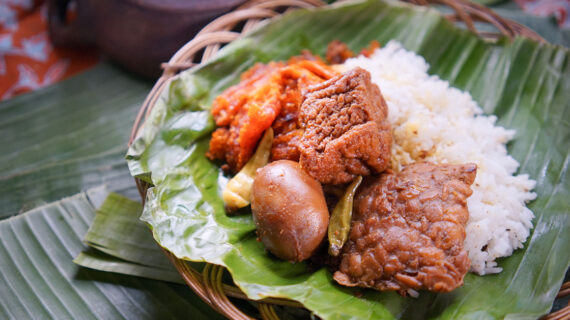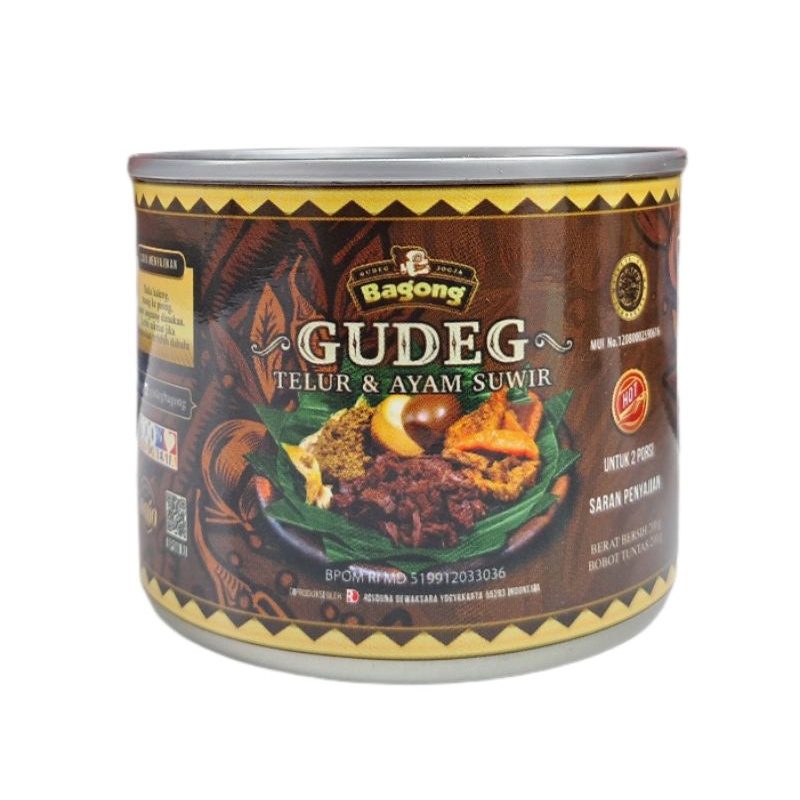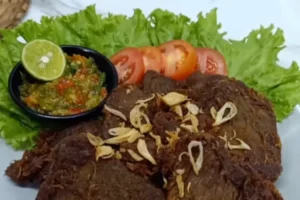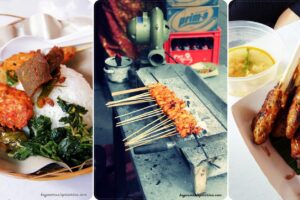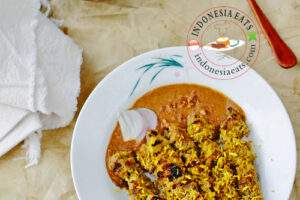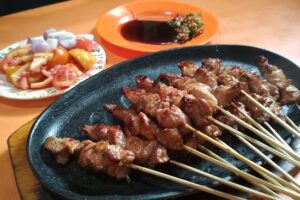Gudeg, a beloved dish from the heart of Indonesia, is more than just a meal—it’s a cultural symbol deeply rooted in the traditions of Yogyakarta and Central Java. This unique dish, made from unripe jackfruit (nangka muda) and simmered in coconut milk, has captivated both locals and international food enthusiasts for centuries. Its rich history, complex flavors, and versatility have made it a staple in Indonesian cuisine. In this article, we explore the origins, preparation, and significance of gudeg, as well as its journey from a humble home-cooked meal to a globally recognized delicacy.
Origins and Legend

The story of gudeg begins with a legend tied to the founding of the Mataram Sultanate in the late 16th century. According to local folklore, during the construction of the new capital in what is now Yogyakarta, soldiers faced a shortage of food supplies. However, they discovered that the dense forests were abundant with jackfruit and coconut trees. To make the unripe jackfruit edible, they boiled it in coconut milk while stirring it with a wooden paddle—this process was known as “hangudêk” in Javanese. From this act, the name “gudeg” is believed to have originated.
This legend not only highlights the resourcefulness of the people but also underscores the deep connection between gudeg and the region’s cultural identity. Over time, the dish evolved, incorporating various spices and ingredients that gave it its distinct flavor and color.
Ingredients and Preparation
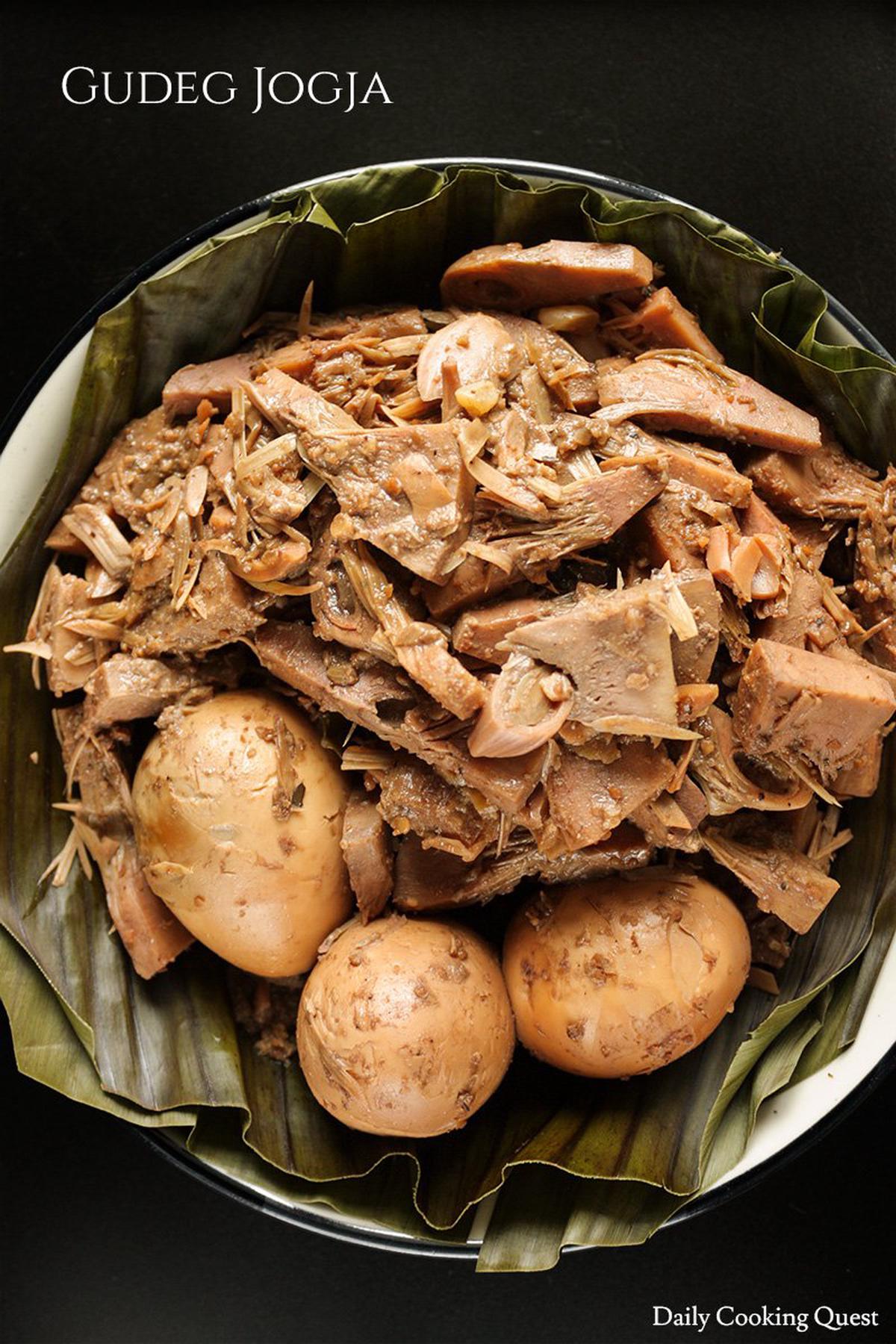
At its core, gudeg is a simple dish, but the complexity lies in its preparation. The key ingredient is unripe jackfruit, which is peeled, cut into small pieces, and boiled until tender. This is then cooked in coconut milk, along with a blend of spices such as lemongrass, galangal, cloves, cinnamon, and nutmeg. The addition of jati leaves (from the ironwood tree) gives gudeg its signature dark brown color and earthy aroma.
There are two main varieties of gudeg: gudeg merah (red gudeg) and gudeg putih (white gudeg). Red gudeg gets its color from the use of jati leaves and sometimes moringa leaves, while white gudeg relies on a lighter spice mix without these elements. Both types are often served with areh (a thick coconut milk sauce), ayam (chicken), telur (eggs), tahu, and tempe.
Variations and Regional Differences

Gudeg comes in several forms, each reflecting the culinary traditions of different regions in Java:
- Gudeg kering: Drier and less liquid, often served as a side dish.
- Gudeg basah: Contains more coconut milk and is typically eaten with rice.
- Gudeg Yogyakarta: Known for its sweet and reddish hue, often associated with the city itself.
- Gudeg Solo: Lighter in color and more watery, with a milder flavor.
These variations showcase how regional influences shape the dish, making gudeg a reflection of the diverse cultures within Indonesia.
Cultural Significance
Beyond its culinary appeal, gudeg holds significant cultural value. It is often associated with special occasions, religious ceremonies, and family gatherings. In Yogyakarta, it is so integral to the local identity that the city is affectionately called “Kota Gudeg” (the City of Gudeg).
In recent years, gudeg has gained popularity beyond Indonesia, appearing in restaurants across Malaysia, Singapore, and even in parts of Europe and the United States. This global reach is a testament to its unique taste and the enduring legacy of Javanese cuisine.
Modern Adaptations and Commercialization
Today, gudeg is no longer confined to home kitchens. It is widely available in markets, street stalls, and restaurants, and even in canned form. Industrial production has made it easier for people to enjoy gudeg anytime, anywhere. While some purists argue that canned gudeg lacks the depth of flavor found in freshly made versions, it has undeniably expanded the dish’s accessibility.
Despite modernization, many traditional gudeg vendors continue to uphold the old methods, ensuring that the essence of this iconic dish remains intact.
Conclusion
Gudeg is more than just a dish; it is a symbol of resilience, tradition, and community. Its journey from a wartime necessity to a celebrated culinary icon reflects the rich tapestry of Indonesian culture. Whether enjoyed in a bustling market in Yogyakarta or in a home kitchen, gudeg continues to bring people together through its comforting, savory, and slightly sweet flavors.

